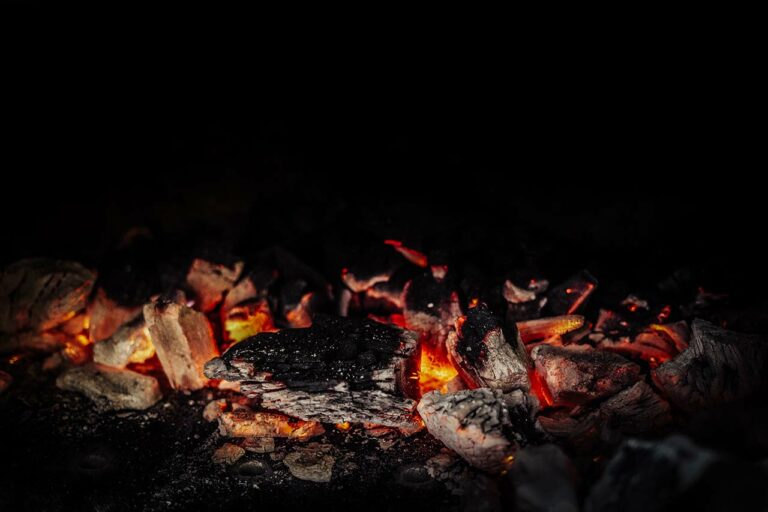Best Medicinal Plants To Grow For Survival
When it comes to survival, knowledge of medicinal plants can be a game changer. Many plants you might encounter in the wild or even in your backyard have potent healing properties. If you’re looking to create a survival garden or simply expand your knowledge of naturally occurring remedies, there are a variety of medicinal plants that you should consider growing.
With a little research and care, you’ll be able to harness the power of these plants and potentially save your life in a survival situation.
Choosing the Right Plants for Survival
When it comes to survival, it’s essential to choose the right plants that offer both edible and medicinal benefits. This will not only provide you with nourishment, but also help in treating common ailments and boosting your immunity. Here we’ll cover a few types of plants, including flowers, herbs, and seeds that you should consider growing in your survival garden.
Flowers
Flowers can have a dual purpose in your survival garden – they’re not only beautiful but can also provide medicinal benefits. Here are a couple of options to consider:
- Calendula: The petals of this bright yellow-orange flower are edible and commonly used in home remedies. A versatile plant, it can be used in creams, ointments, and even as a treatment for diaper rash.
- Belladonna: While this plant is great for inducing sleep, it’s essential to be cautious with its usage, as consuming too much can be fatal.
Herbs
Herbs are not only great for cooking but also offer a wide range of medicinal properties. Here are a few herbs that can be beneficial for your survival garden:
- Plantain: This common weed is highly nutritious and can be a regular part of your first aid kit. It grows in most parts of North America and around the world, which makes it easily accessible.
- Borage: Growing well in full sun and moist soil conditions, borage can be used as an edible plant and has medicinal properties that help with kidney disease and eye conditions.
Seeds
Seeds can be a valuable part of your survival garden as they often contain essential nutrients and can be easily stored for extended periods. Here are a couple of seeds to consider:
- Flax seeds: Rich in omega-3 fatty acids, fiber, and antioxidants, flax seeds can be helpful for maintaining a healthy heart, digestive system, and improving overall immunity.
- Chia seeds: These small but mighty seeds are packed with nutrients such as protein, fiber, calcium, and antioxidants. They can be used in various ways, like making energy-boosting drinks or even as an egg substitute.
Specific Plants To Grow
Sage
Sage is a versatile plant with strong aromatic properties, making it a useful addition to your garden. It can grow in a variety of climates and is hardy in zones 4 through 8. Sage offers a range of medicinal benefits such as aiding digestion, providing relief from cold symptoms, and reducing inflammation.
Echinacea
Echinacea, also known as purple coneflower, is popular for its immune-boosting properties. This hardy perennial grows well in zones 3 to 9 and attracts pollinators to your garden. Echinacea is used to treat cold and flu symptoms and to help speed up wound healing.
Rosemary
Rosemary is an evergreen shrub with needle-like leaves and a potent fragrance. It grows best in zones 6 to 10 and prefers well-drained soil and full sun. Known for its memory-enhancing properties, rosemary can also help improve digestion and alleviate muscle pain.
Ginger
Ginger is a tropical plant that is known for its spicy, aromatic flavor. It thrives in well-draining, fertile soil and partial shade. You can grow ginger in zones 9 to 12 or in containers indoors. Ginger is widely used to treat nausea, indigestion, and inflammation.
Yarrow
Yarrow is a hardy perennial that grows well in zones 3 to 9. Its feathery leaves and clusters of small flowers make it an attractive addition to any garden. Yarrow has been used as a wound healer and can help reduce inflammation and fevers.
Lemon Balm
Lemon balm is an easy-to-grow perennial that is hardy to zones 4 through 9. It prefers well-draining soil and can tolerate both sun and shade. Lemon balm has a calming effect and can help alleviate anxiety, promote sleep, and reduce cold sores.
Parsley
Parsley is a popular culinary herb that grows well in zones 5 through 9. It prefers full sun and well-drained soil. Parsley is rich in vitamins and minerals and is known for its diuretic properties, which can help flush out toxins from the body.
Lavender
Lavender is a fragrant perennial that grows well in zones 5 to 9. Its beautiful purple flowers are popular with pollinators. Medicinally, lavender is known for its calming effect and can help with anxiety, insomnia, and headaches.
Turmeric
This powerful medicinal plant is a close relative of ginger. Turmeric needs well-drained soil and full sun to partial shade, making it suitable for zones 7 to 10. Turmeric’s anti-inflammatory and antioxidant properties help with a range of conditions such as arthritis, heart disease, and cognitive function.
Thyme
Thyme is a perennial aromatic herb that grows best in zones 5 through 9. Its small leaves and stems are perfect for culinary use and its antimicrobial and anti-inflammatory properties make it great for treating respiratory and digestive issues.
Plantain
Plantain is a common yard weed that thrives in a range of climates. Though often overlooked, this hardy plant has numerous medicinal benefits, including wound healing and treating skin irritations.
Dandelion
Don’t let its status as a common weed fool you; dandelion is a powerhouse of medicinal properties. It grows practically anywhere and can help with digestive issues, kidney function, and skin conditions.
Aloe Vera
Aloe Vera is a succulent that is known for its soothing and healing properties. It thrives in well-draining soil and prefers zones 8 to 11. Aloe Vera is commonly used to treat burns, rashes, and skin inflammation.
Basil
Basil, a popular culinary herb, is also an effective medicinal plant. It can help alleviate digestive issues, reduce inflammation, and is known to have antimicrobial properties. Basil prefers well-draining soil and full sun, making it suitable for zones 4 to 10.
St. John’s Wort
St. John’s Wort is a hardy perennial that prefers full sun and well-draining soil. It grows best in zones 5 to 9, and its bright yellow flowers attract pollinators. This plant is best known for its use in treating mild to moderate depression and anxiety.
Jerusalem Artichokes
Jerusalem artichokes, also called sunchokes, are a tasty tuber that can grow in zones 4 to 9. Their sunflower-like blooms attract pollinators, and their edible tubers are packed with nutrients. High in inulin, a prebiotic, Jerusalem artichokes are beneficial for gut health.
Growing and Harvesting Medicinal Plants
Here’s some tips for successfully growing and harvesting these valuable plants.
Choose the right plants for your location. Different herbs thrive in different climates, so it’s crucial to pick plants that will grow well in your region. Some common medicinal plants that can be cultivated in many areas include plantain, feverfew, and various herbs like thyme, sage, and rosemary. To get started, all you need is a well-draining soil, sunlight, and water.
Planting in containers is an excellent option if you don’t have a large outdoor space or if you live in an area with harsh weather conditions. This allows you to bring the plants inside during extreme temperatures, thus ensuring their survival. Plus, container planting makes it easier to control the quality of the soil and water.
Regularly tending to your medicinal plants is essential to ensure they grow well and produce the necessary nutrients and medicinal compounds. Make sure they receive a sufficient amount of water and sunlight. Adding organic compost can also help maintain good soil fertility. Importantly, avoid using chemical pesticides, as they may reduce the plants’ medicinal properties.
When it’s time to harvest, do so with care and a purpose. Harvesting at the right stage of growth can make a difference in the potency and overall quality of the plant. For example, leaves should be picked when they are young and tender, while flowers are best harvested just before they fully open. Always use clean, sharp tools to avoid damaging the plant and keep harvested parts in a cool, dry place until you’re ready to use them.
Drying and storing your medicinal herbs properly will keep them effective for months or even years. To dry them, simply hang the cuttings upside down in a well-ventilated area away from direct sunlight. Once they are completely dry, store them in airtight containers and label them with the plant name and date of harvest.
Growing and harvesting your own medicinal plants can be a rewarding and practical addition to your survival plan. Not only will you have access to natural remedies, but you’ll also gain a deeper understanding and appreciation for the healing powers of nature.




